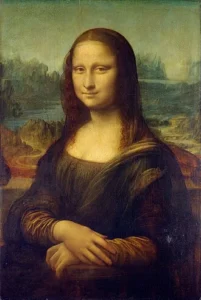LESSON 3.6
Write What Statement
Grades 7 – Adult

What Statements tell the reader or listener exactly what the subject is. At least one of the variables must be New: something audience probably know little about and are likely to be interested in. Notice the difference:
| Old | New |
|---|---|
| Abraham Lincoln | Susan Butcher, most famous female musher |
| Donald Trump | Eliud Kipchoge, 1st person to run a sub-two hour marathon |
| Oprah Winfrey | Florence Baker, victim of white slavery; famous explorer of east Africa |
| Julius Caesar | Billy Mills, Native American; only American to win 10,000-meter race |
| My father* | Percy Fawcett, explorer who tried to find South America’s hidden city |
*Your father is “Old” because he is New to readers but unlikely to be interesting to them.



The Rules of What Statements
What Statements must—
- Be a sentence.
- Have two variables
- Have one variable, or a relationship between two Old variables, that is New
The What Statement Flowchart
Check your potential What Statement against the following flowchart:
| Step | Question | Yes | No |
|---|---|---|---|
| 1 | Is the What Statement (WS) a sentence? | Go to step 2 | Rewrite |
| 2 | Are there two variables? | Go to step 3 | Rewrite |
| 3 | Is at least one variable, or the relationship of two Old variables, New information? | WS is complete Check for wordiness, grammar, and spelling |
Re-examine your New ideas. Replace and rewrite |
Review
So far, we have used this formula to determine if a subject is worth discussing:
O = OLD Most educated adults are likely to know a lot about this OR is not likely to be interested in it.
N = NEW Most educated adults not likely to know a lot about this AND is likely to be interested in it.
O + O = poor subject
O + N = good subject
N + O = good subject
It doesn’t matter which order the variables are in, as long as at least one of them is New.
N + N = good subject
Often, both variables are New. For example:
Billy Mills, the only American ever to win the 10,000-meter race in the Olympics, had to overcome prejudice against Native American runners.
| New Variable: | Billy Mills, the only American ever to win the 10,000-meter race in the Olympics, is a New variable. |
Verb Phrase: had to overcome
New Variable: prejudice against Native American runners
Here, there is no Old Variable. To make organizing easier later on, label the more general variable N1 and the more precise variable N2. It does not matter which comes first in the What Statement.
N2: Billy Mills, the only American ever to win the 10,000-meter race in the Olympics, is a New variable.
Verb Phrase: had to overcome
N1: prejudice against Native American runners
Split Variables
 Often, variables are split in the What Statement. For example, in the What Statement below, the Old Variable is Da Vinci’s Mona Lisa. Half occurs early in the What Statement and half at the end. Here, one variable is Old and the other is New.
Often, variables are split in the What Statement. For example, in the What Statement below, the Old Variable is Da Vinci’s Mona Lisa. Half occurs early in the What Statement and half at the end. Here, one variable is Old and the other is New.
Da Vinci used the sfumato technique in the Mona Lisa.
Old Variable: Da Vinci’s Mona Lisa
Verb phrase: used
New Variable: sfumato technique
Placement of the Variables
The New and the Old variables can go in either position in the Barbell of Communication:
America’s first
great female sprinter,
Task 3.6.1 – Tandem, Small Group, or Class
- Draw a barbell
- Place the person you chose in the previous lessons in one of the ends
- Place the “Old” variable you chose in the previous lessons in the other end.
- Put a verb or verb phrase on the bar.
- Check the result against the What Statement’s rules and flowchart.
Revised Formula
The formula now looks like this:
O + O = poor subject
O + N = good subject
N + O = good subject
N + N = good subject
Fixing Old Variables
Old Variables often will be too vague, broad, and/or too complex for an essay. For instance, in the What Statement below, it would be impossible to cover prejudice.
Billy Mills had to overcome prejudice.
When variables such as this occur, either funnel them down or find another subject.
Funneled:
Billy Mills had to overcome prejudice against Native Americans.
NEW
Native Americans
OLD
Funneling it further, we find—
Billy Mills had to overcome prejudice against Native Americans runners.
NEW2
Native Americans runners
NEW1
Notice that N2 is at the beginning of the sentence. Again, the order of the two variables in a What Statement does not matter.
Task 3.6.2 – Individual or Tandem
Identify both variables in the following What Statements. Determine if they are
New
Old
New1
New2
Old variable that is too vague, broad, or complex
tautology (both variables are the same thing)
split variable
Split variables will have another designation as well, such as Split – Old.
- Global warming is causing increased litter sizes of wild pigs in Germany.
- Increased planting of corn and sunflowers has increased the litter sizes of wild pigs in Spain.
- Davy Crockett, the famed Tennessee frontiersman, fought and died at the Alamo.
- Steve Prefontaine’s success as a runner helped create Nike shoes.
- My uncle fought in the Battle of Attu, the only battle fought on American soil during WWII.
